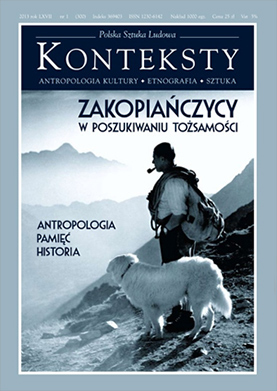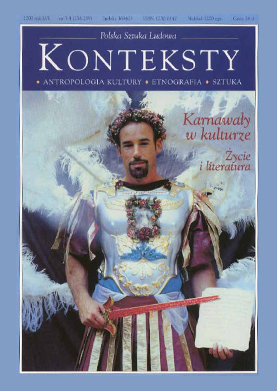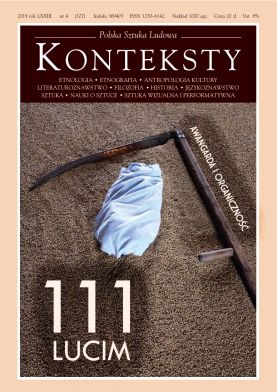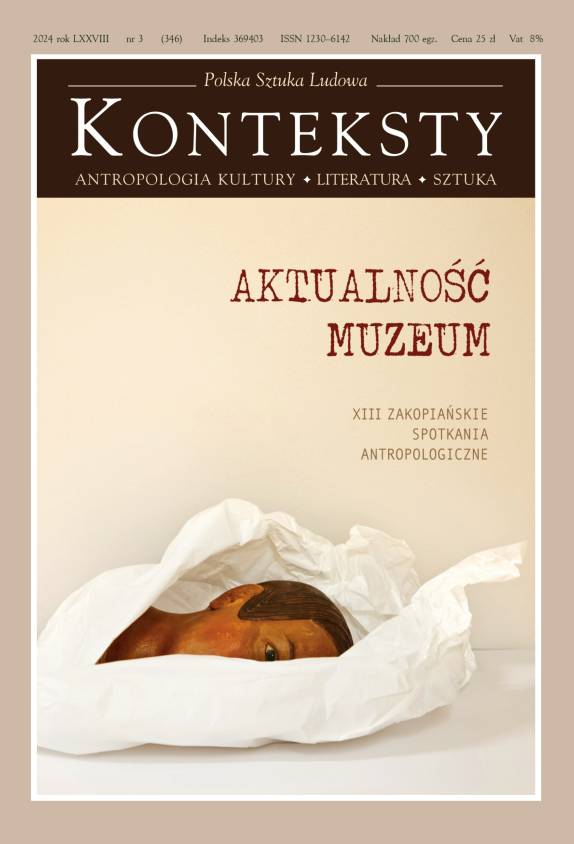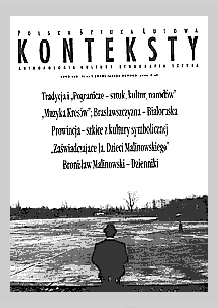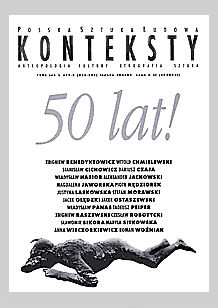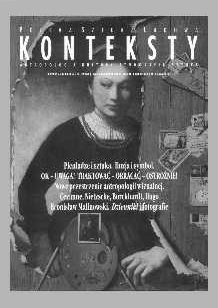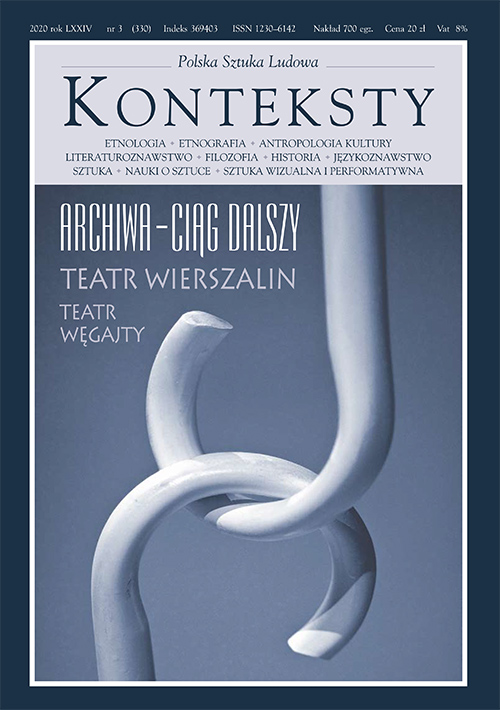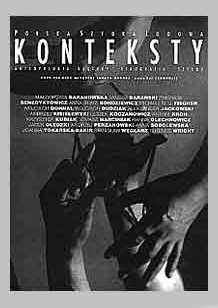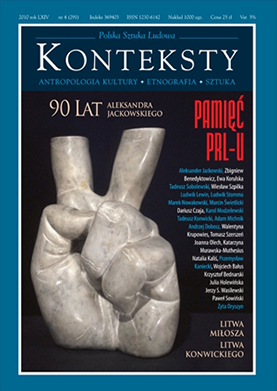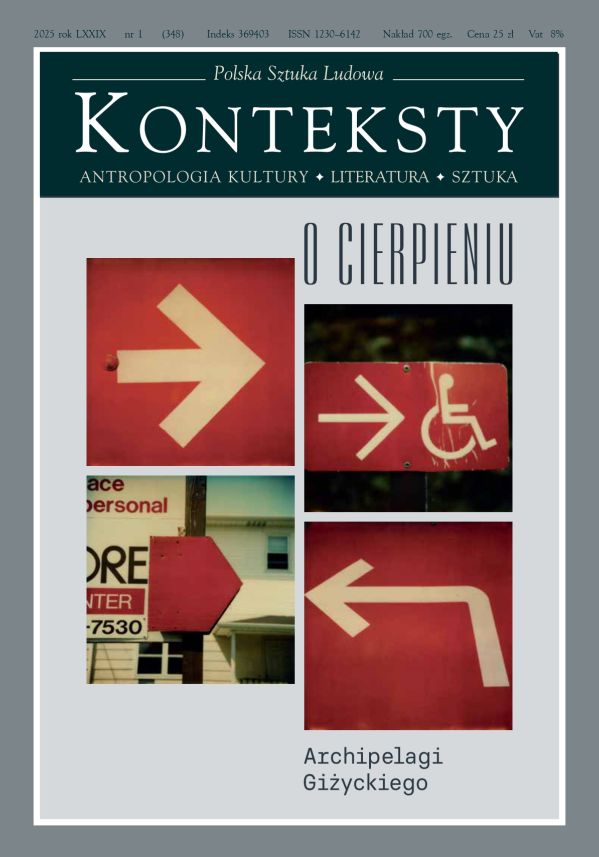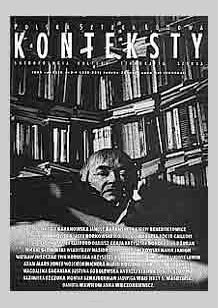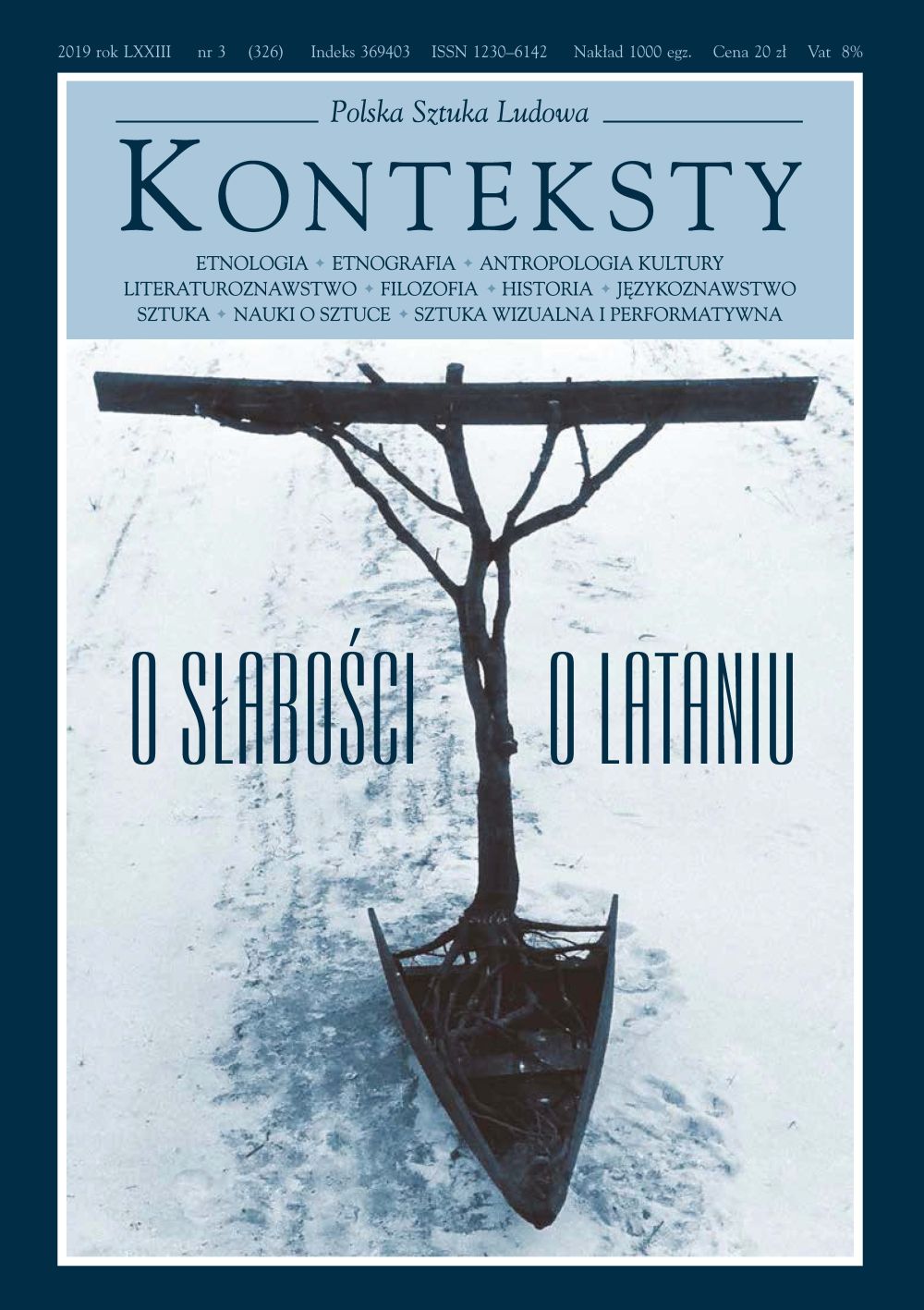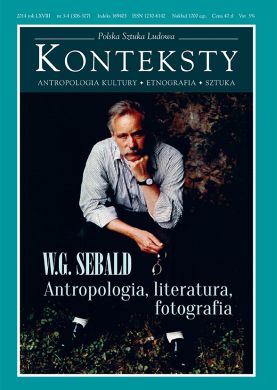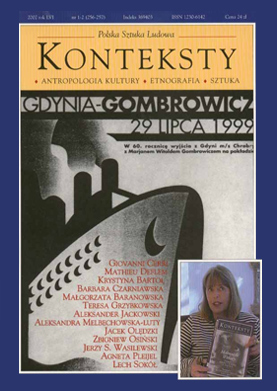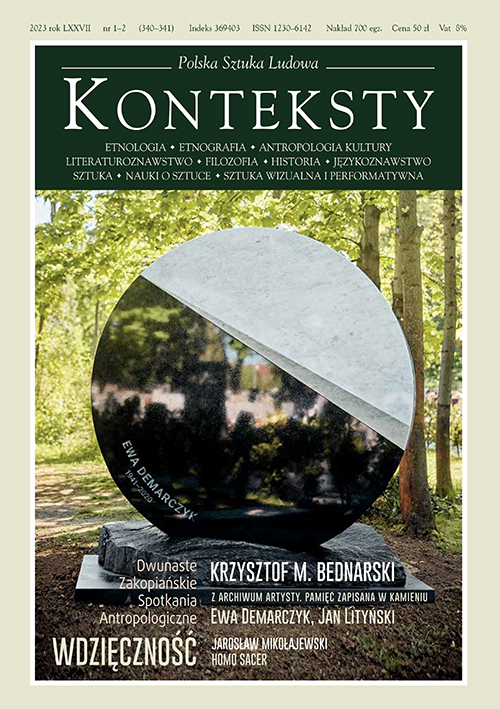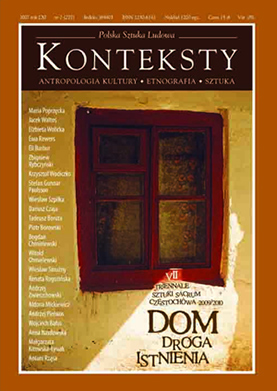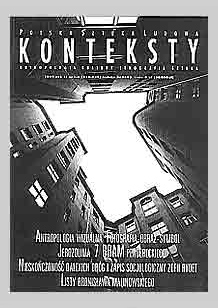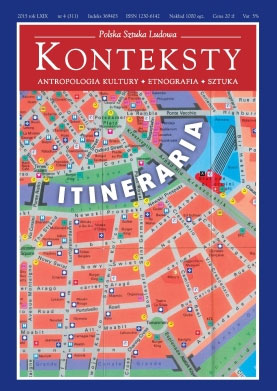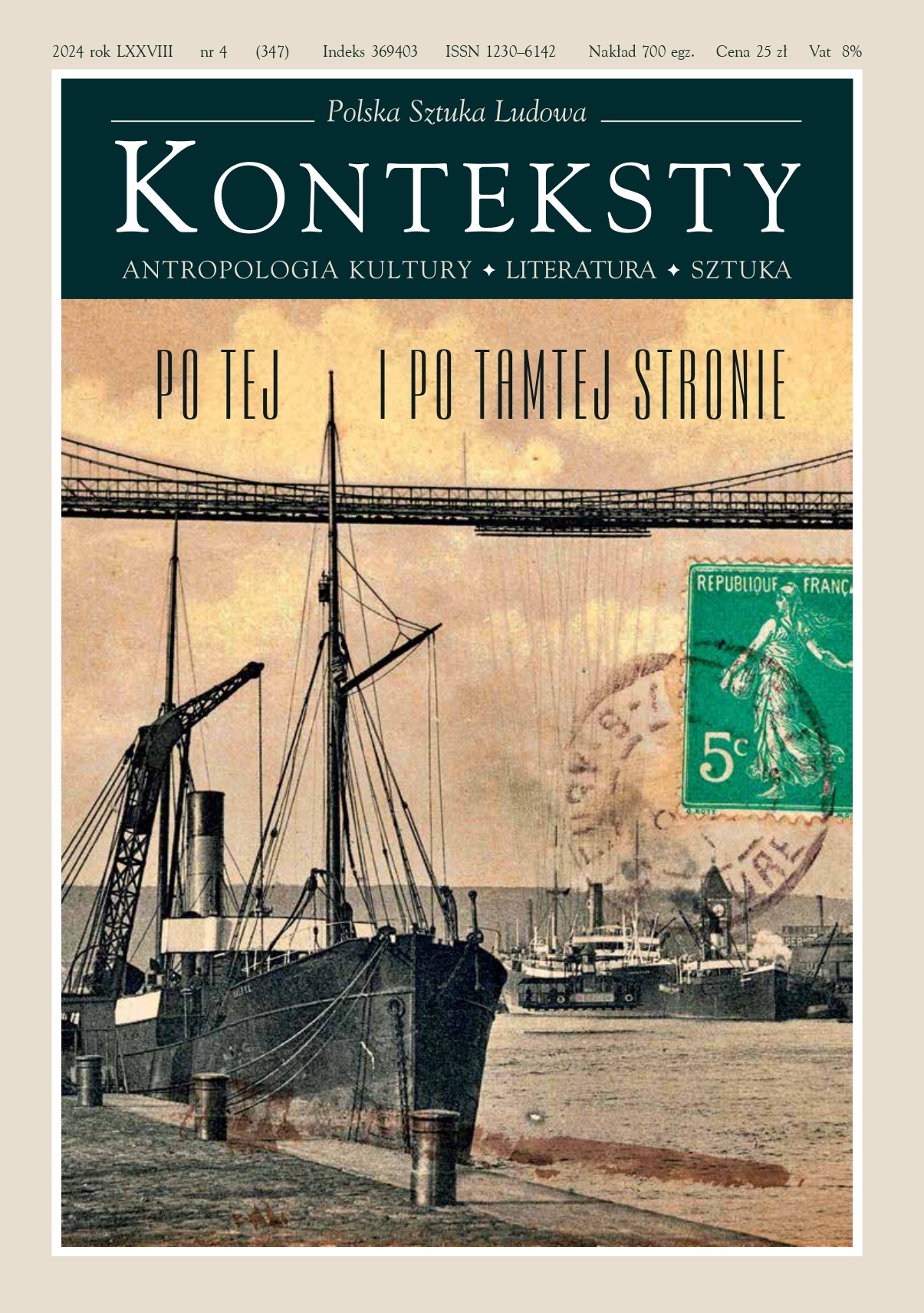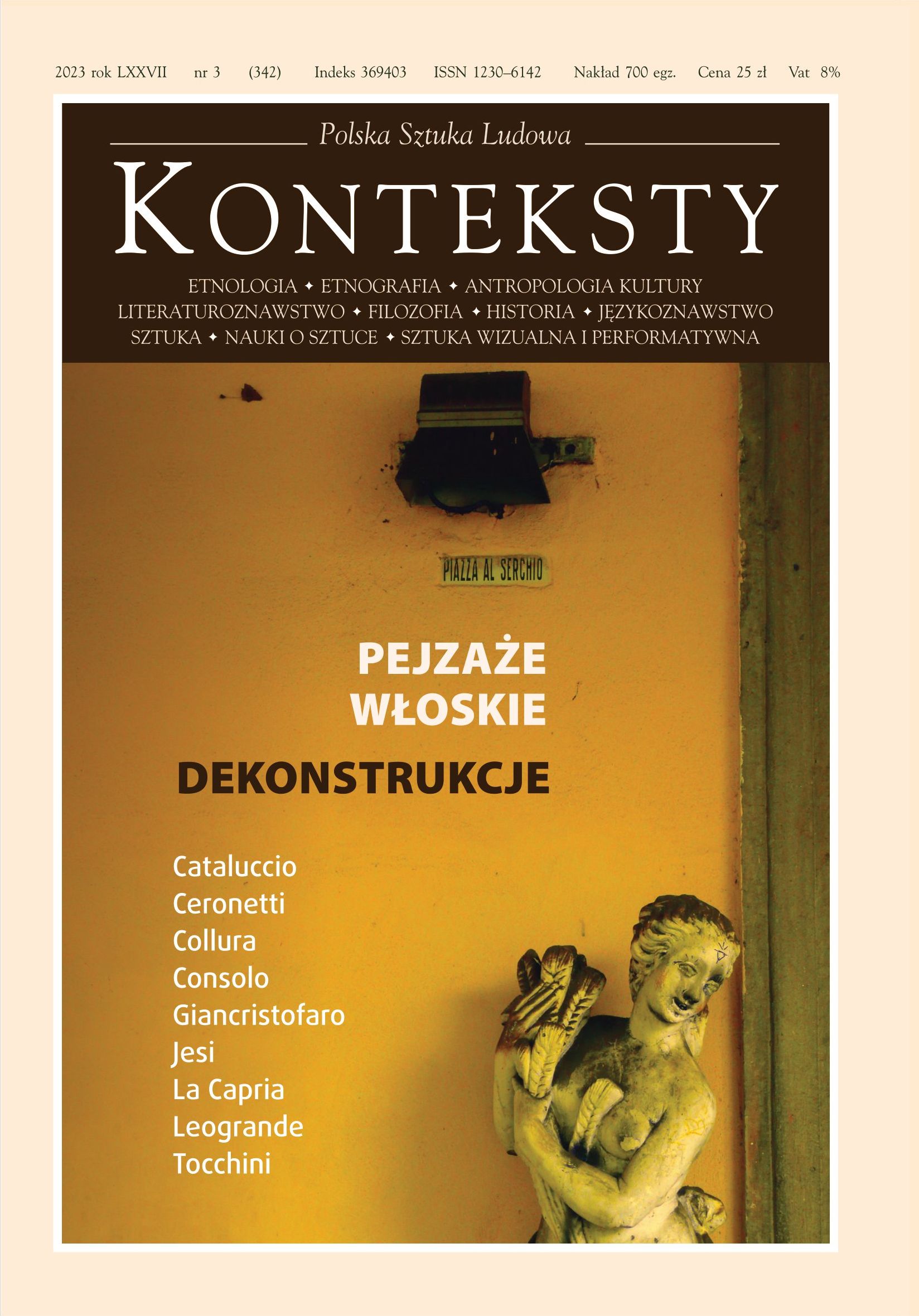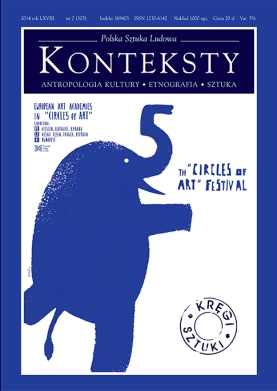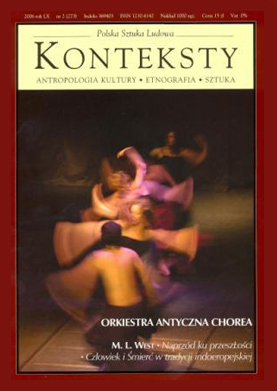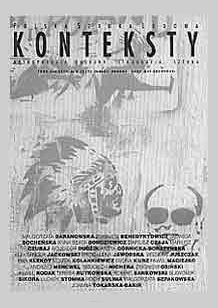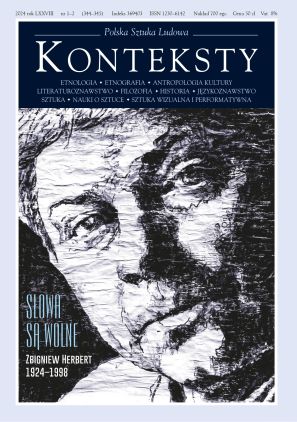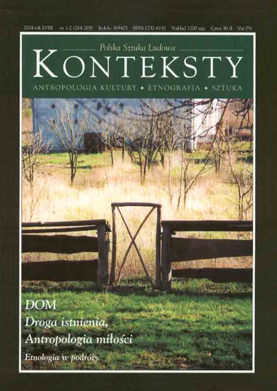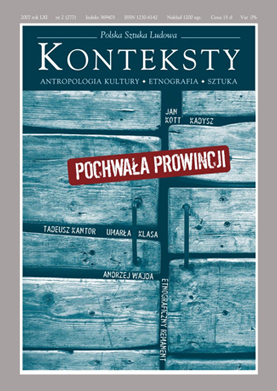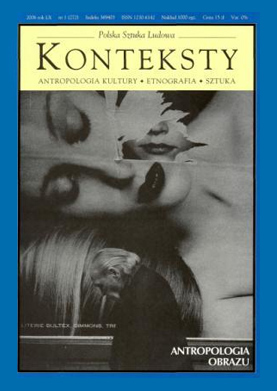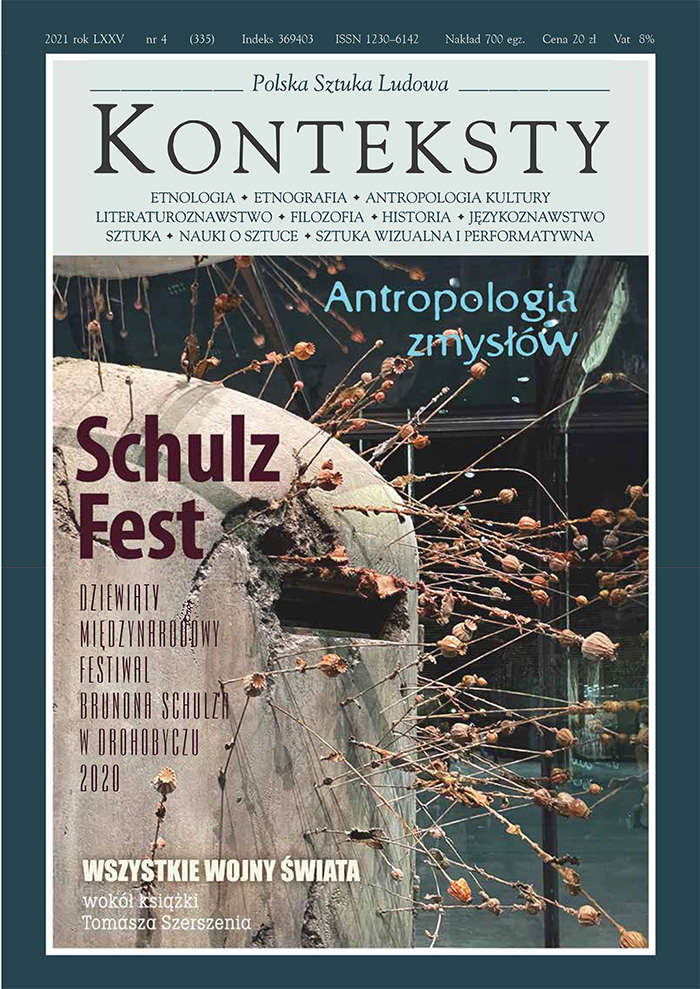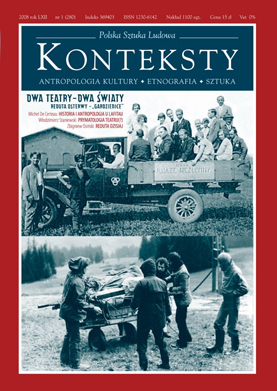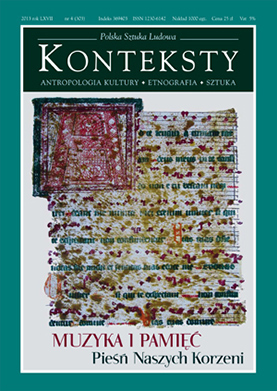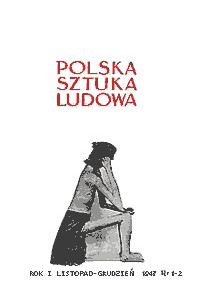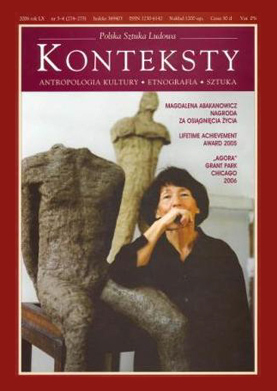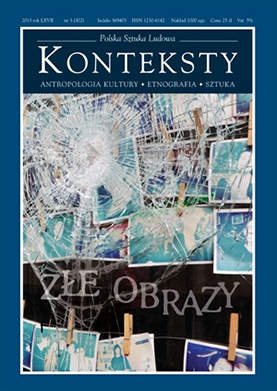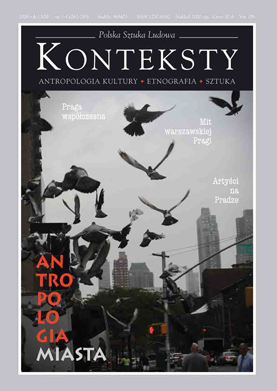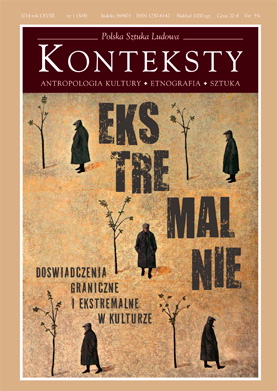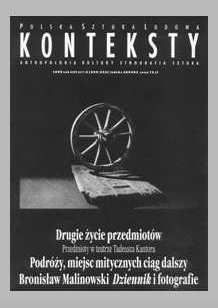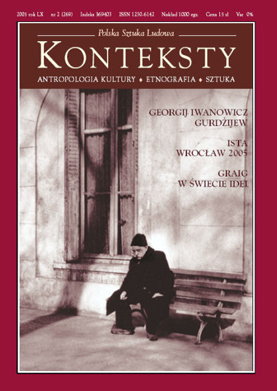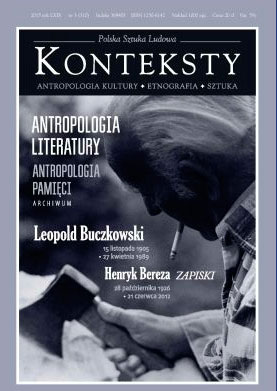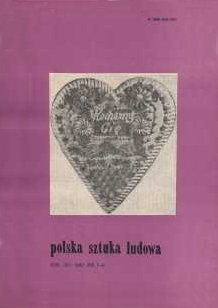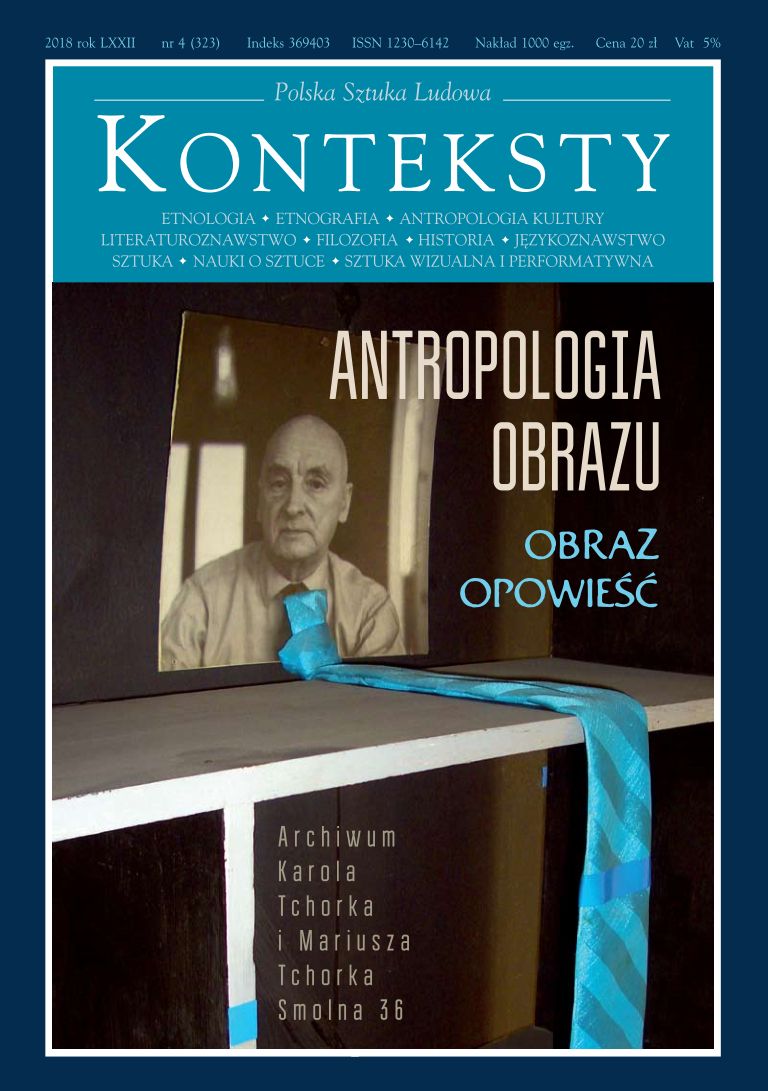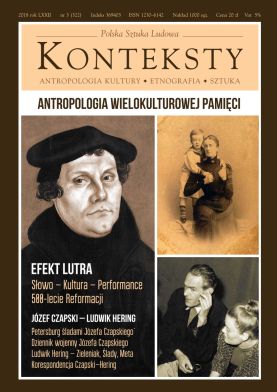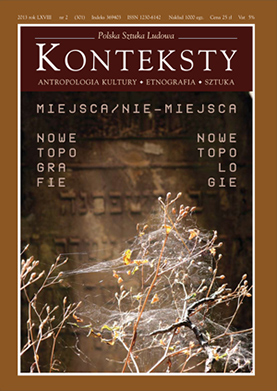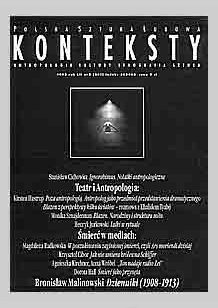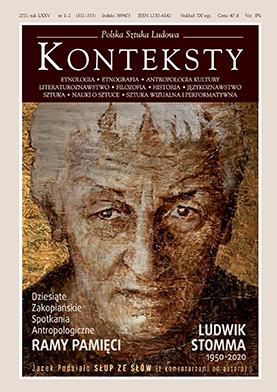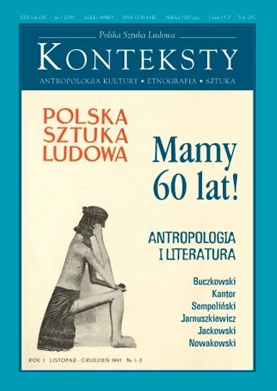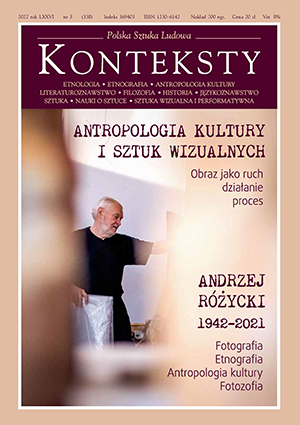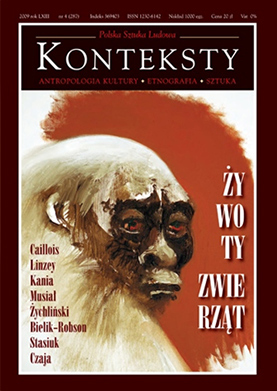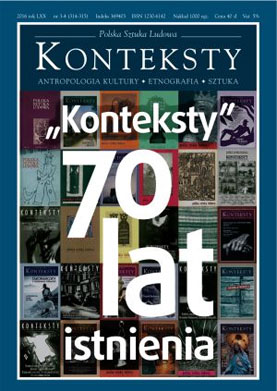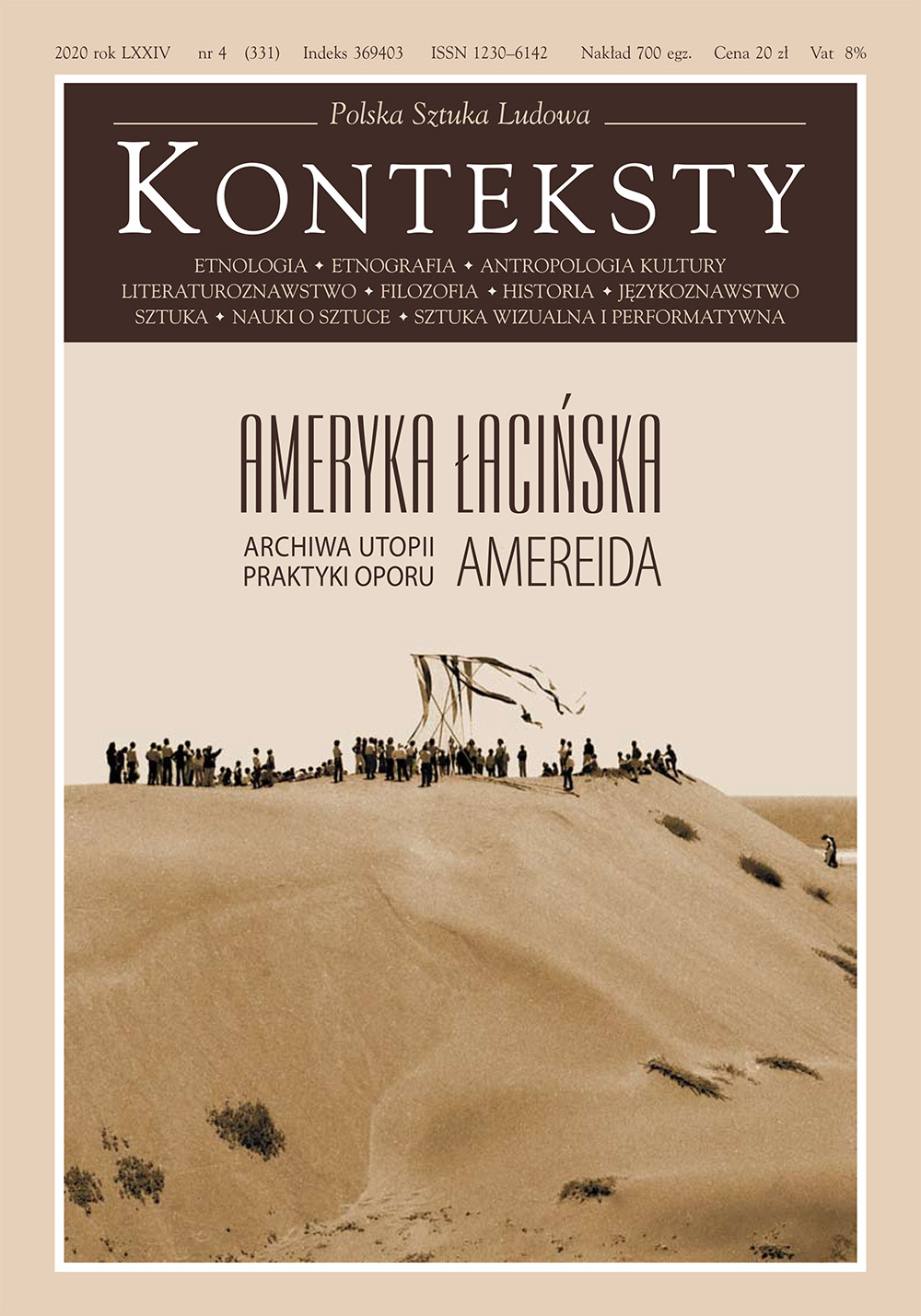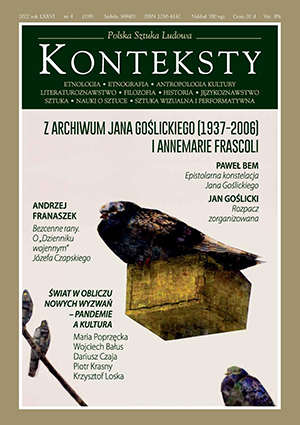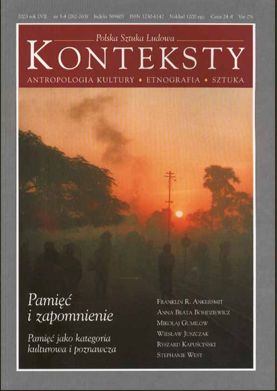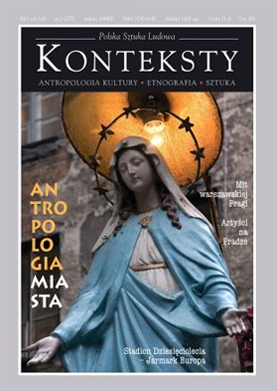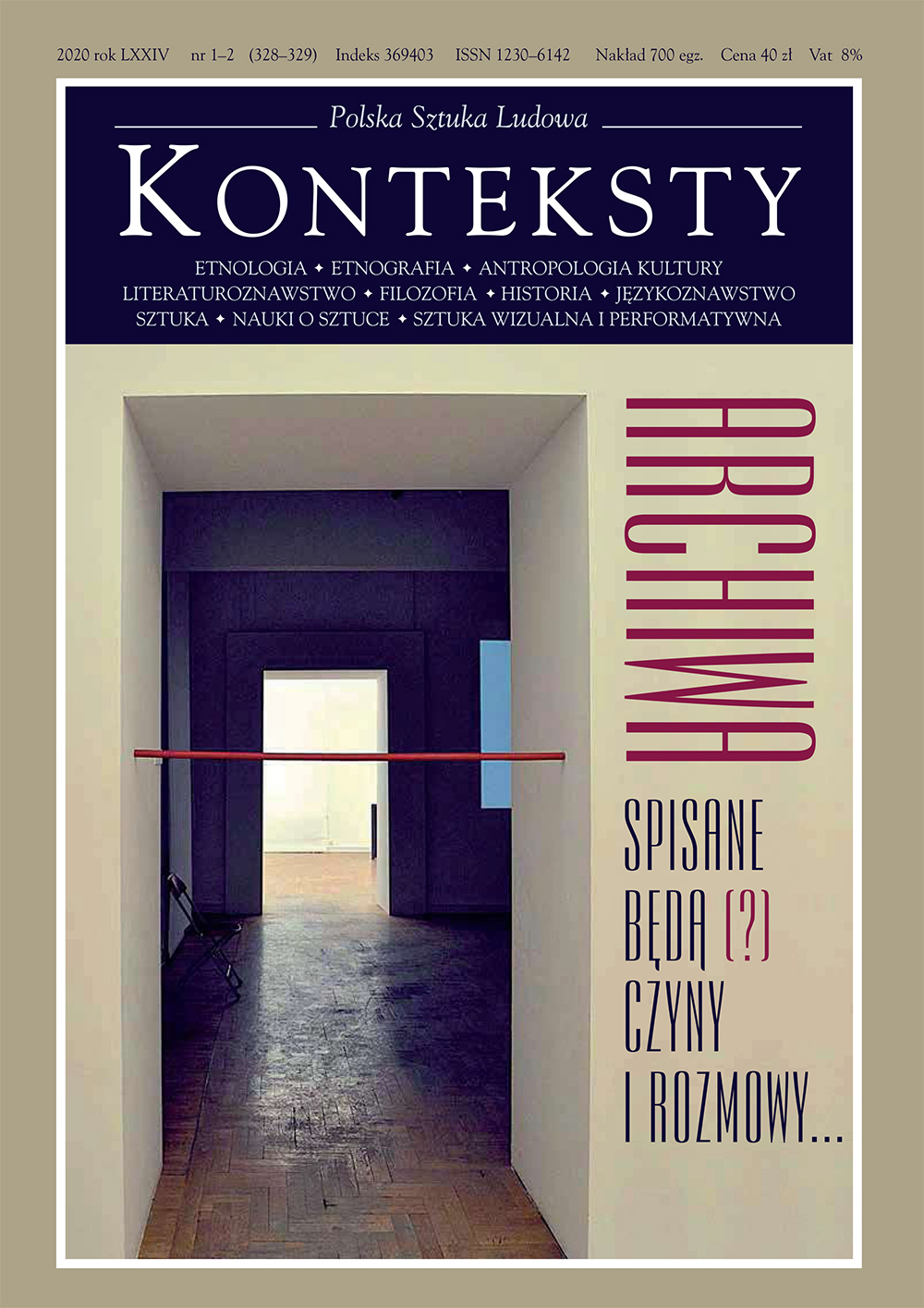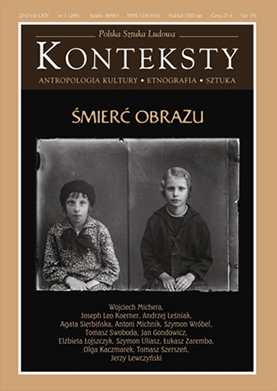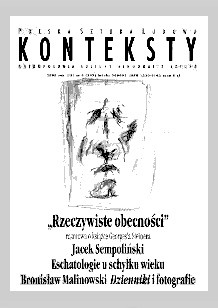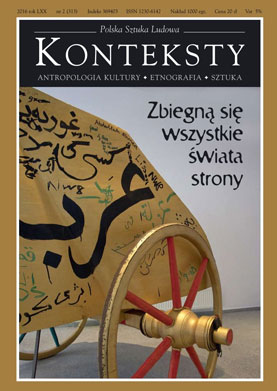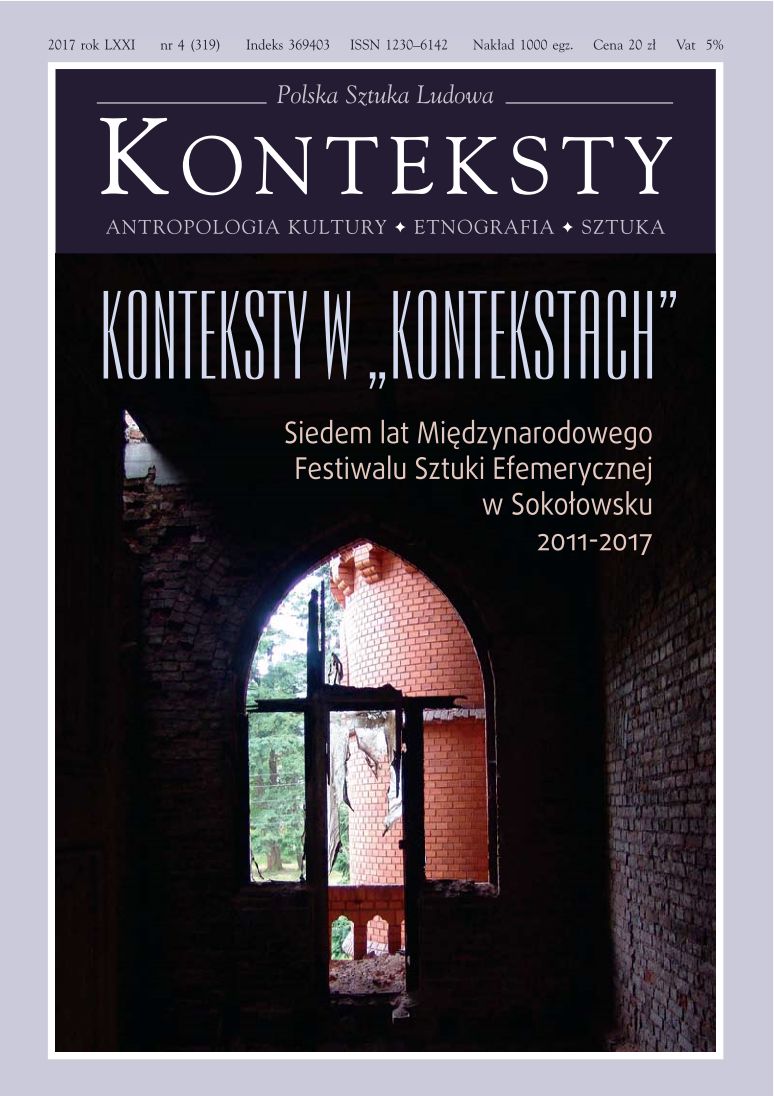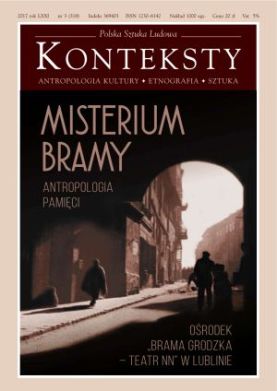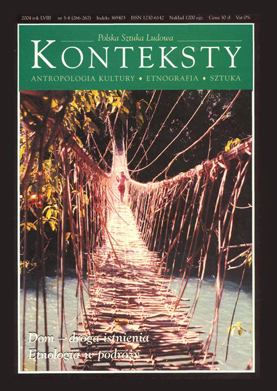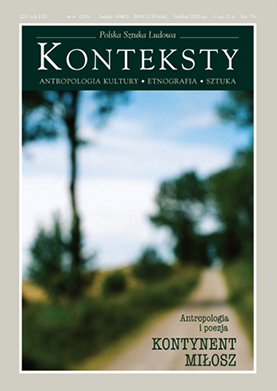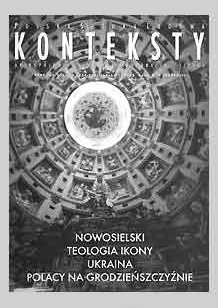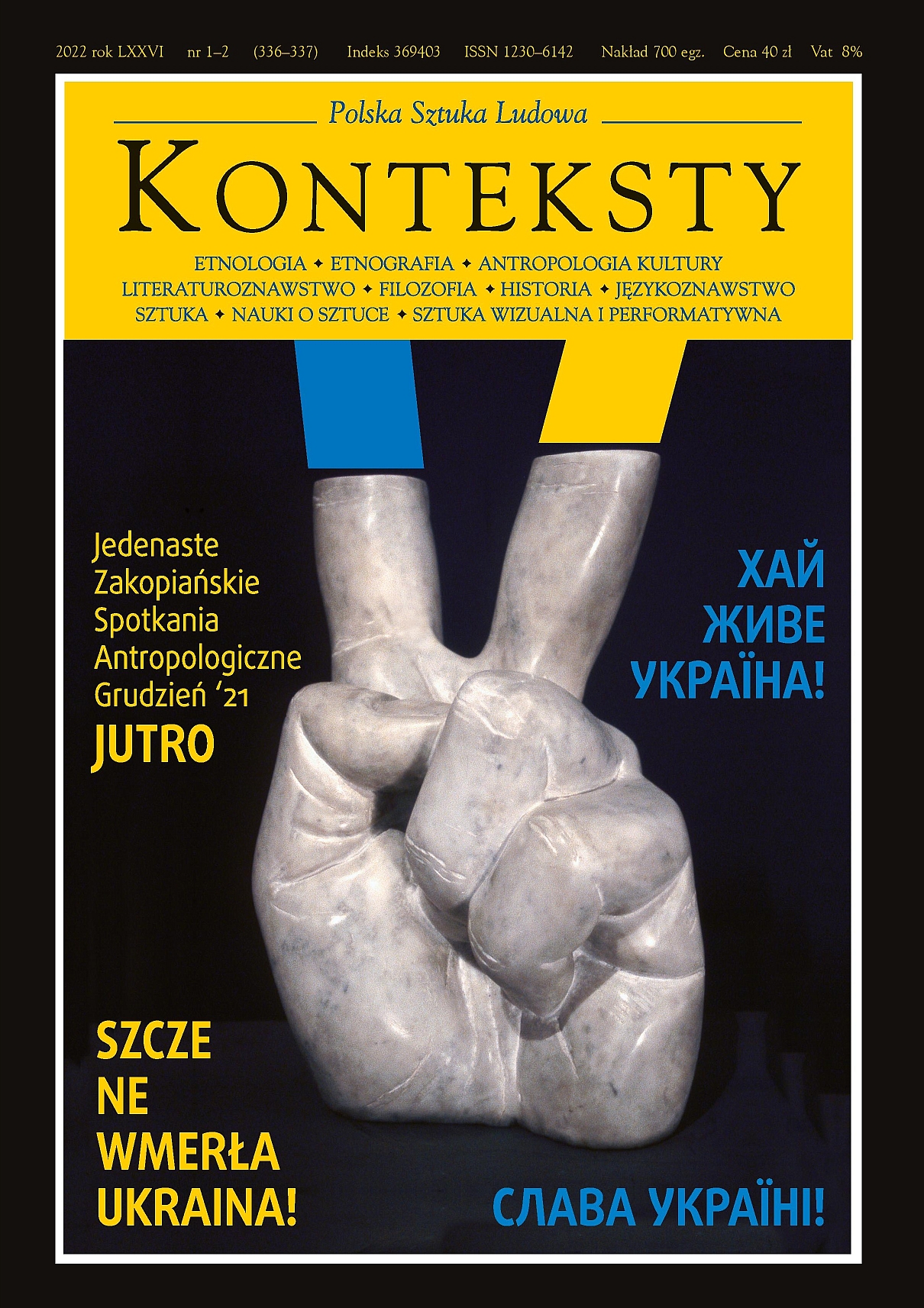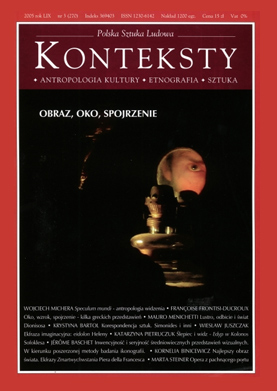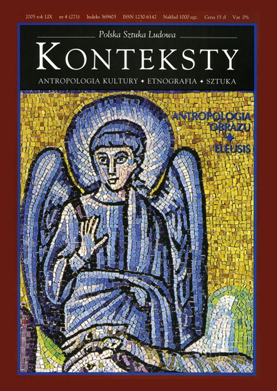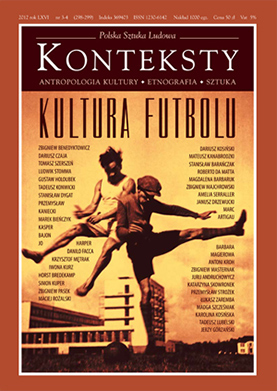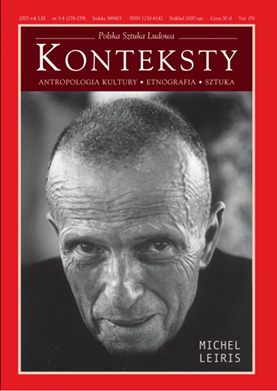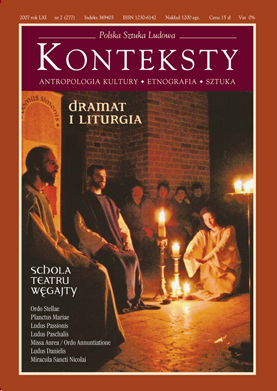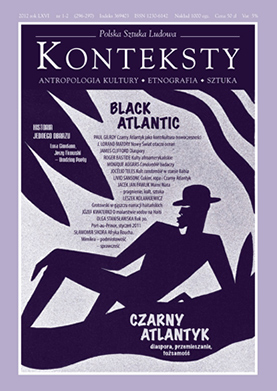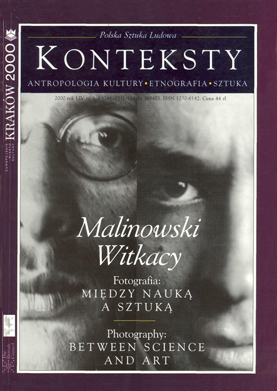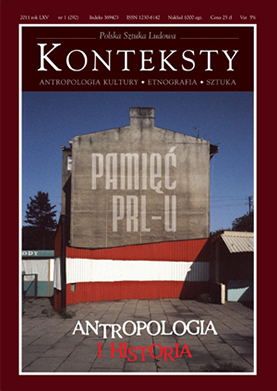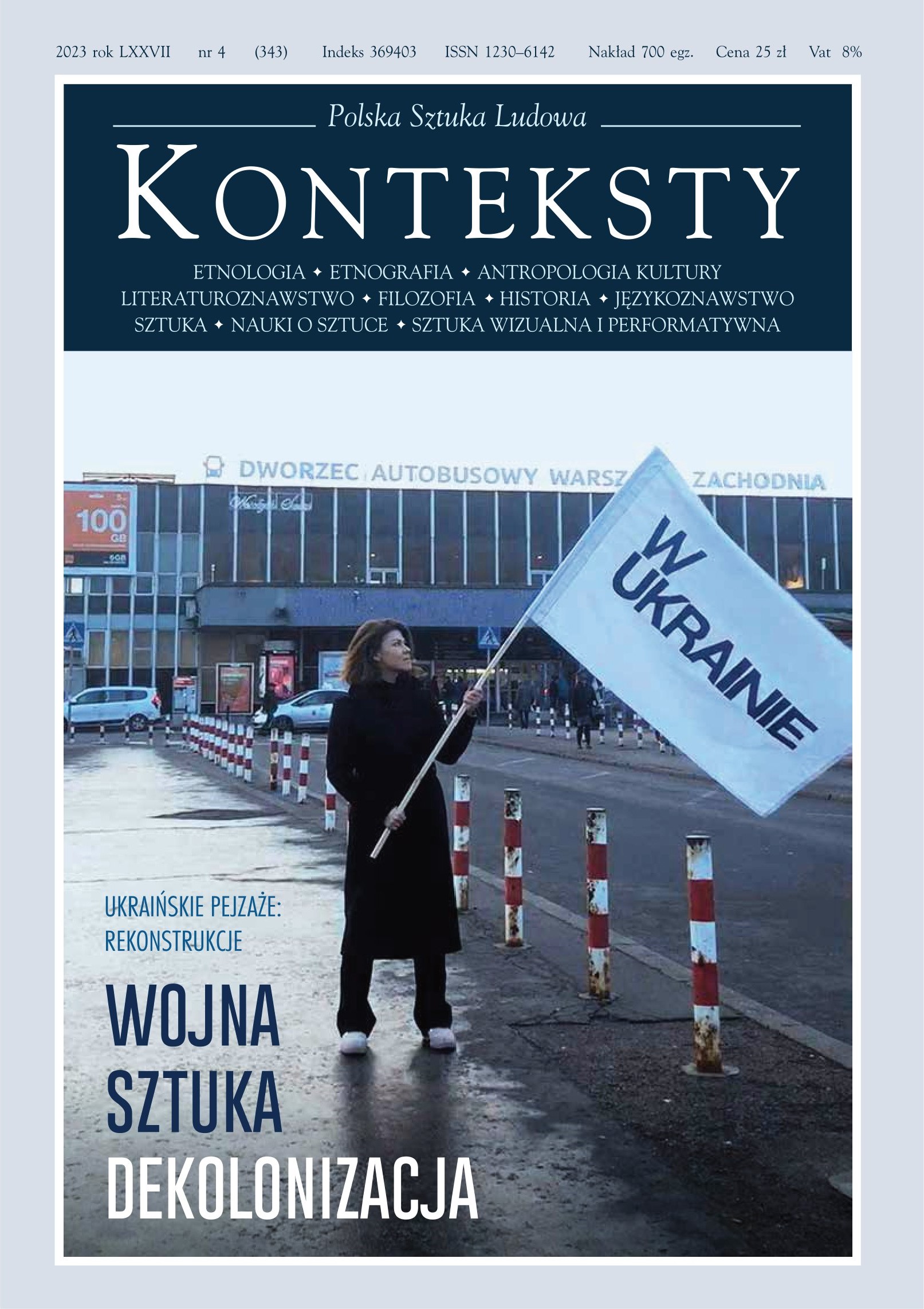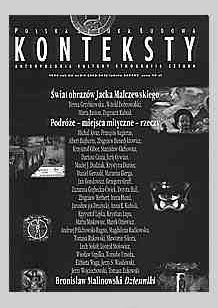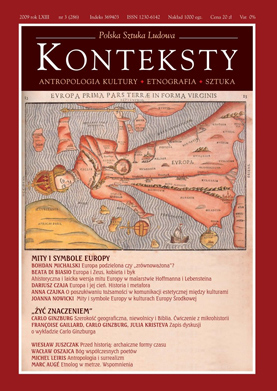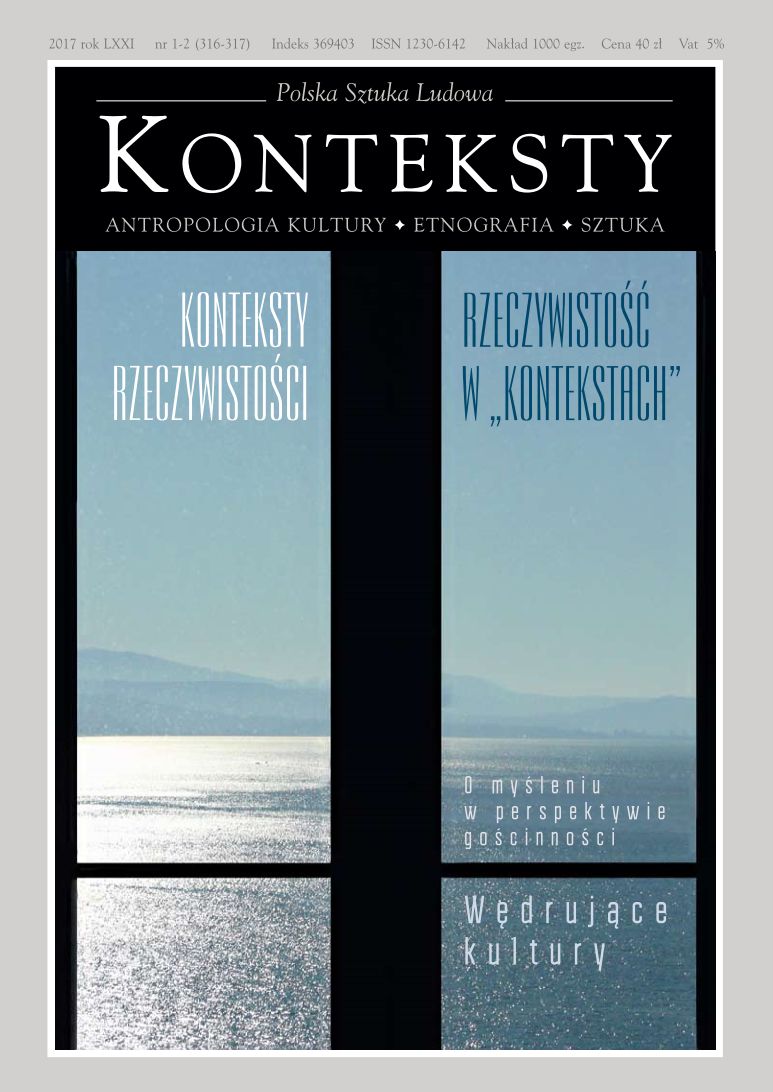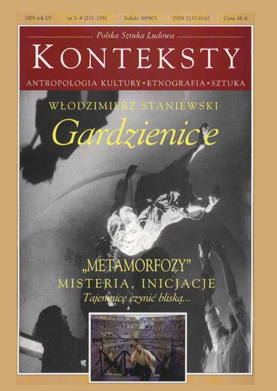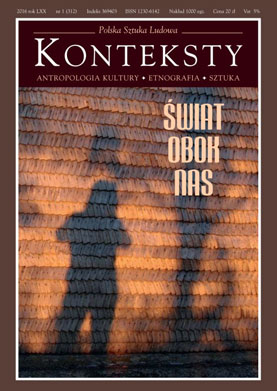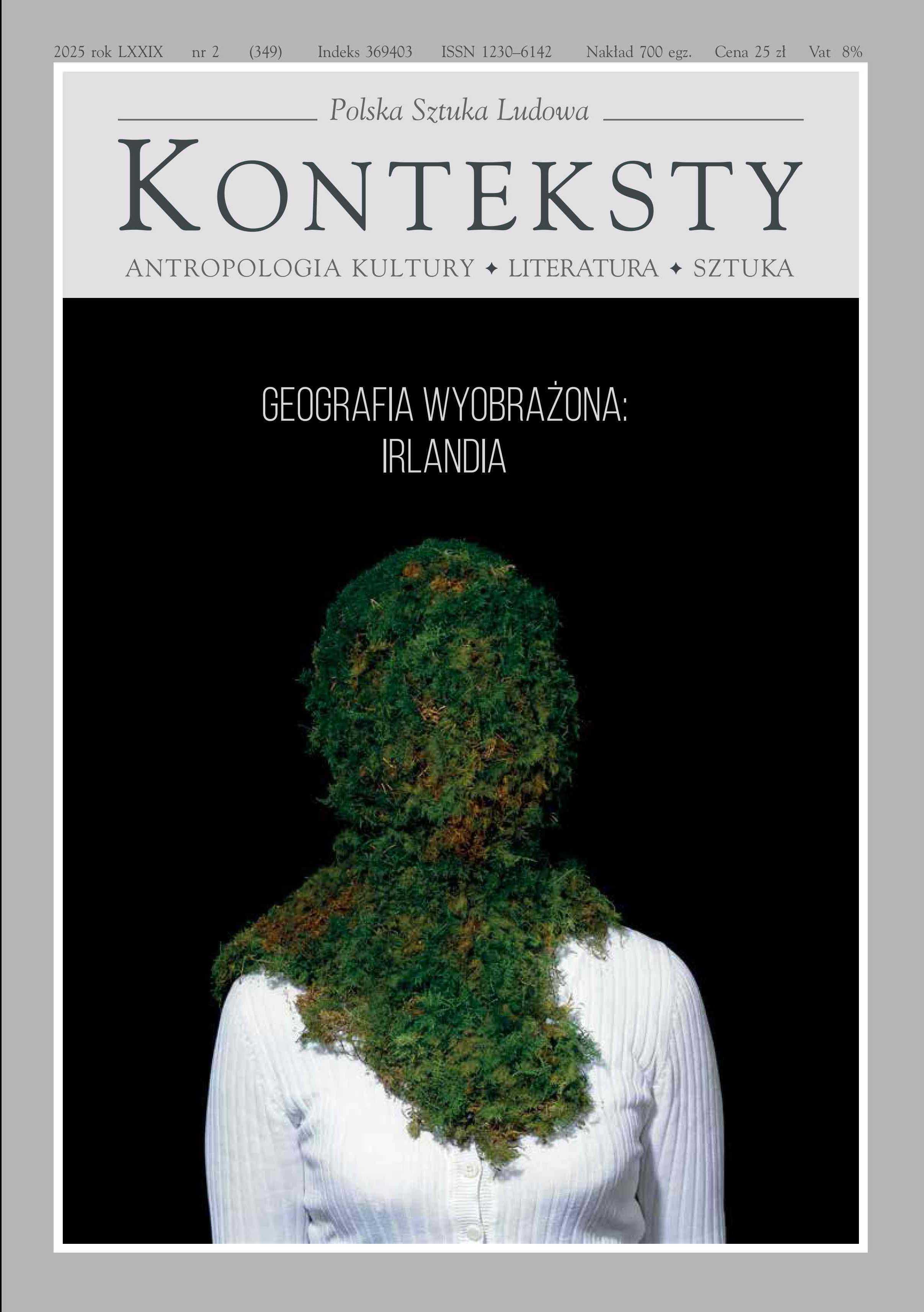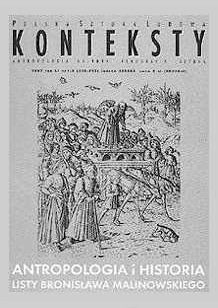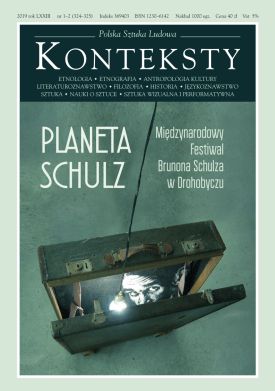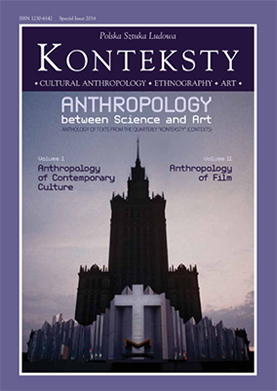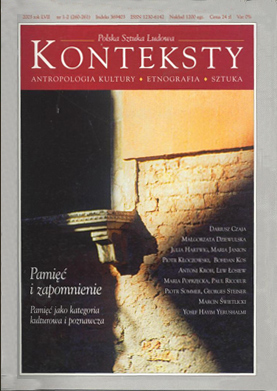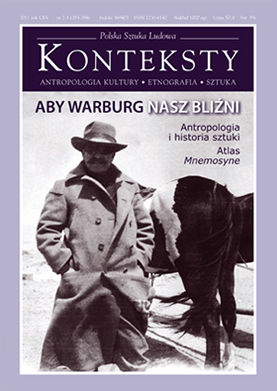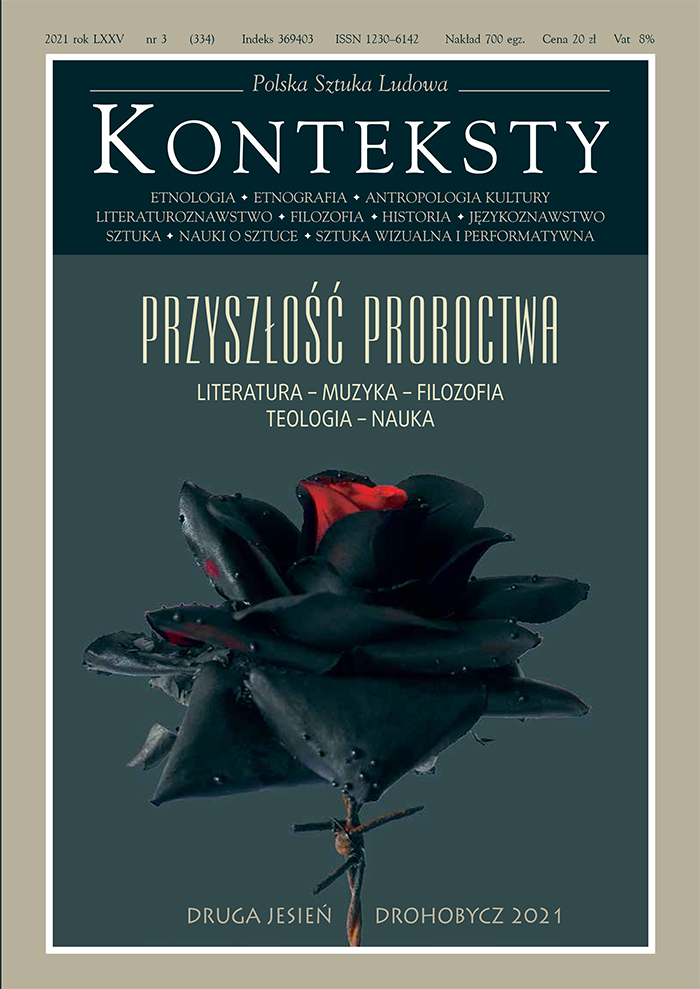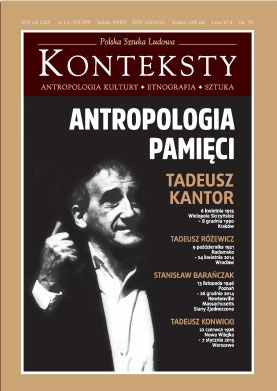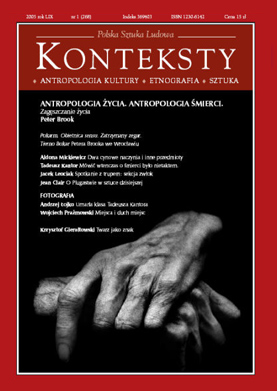Issue 2018/1-2 (320–321) - Magic Mountain I Am Unable to Say This 40 Years of \\Gardzienice\\
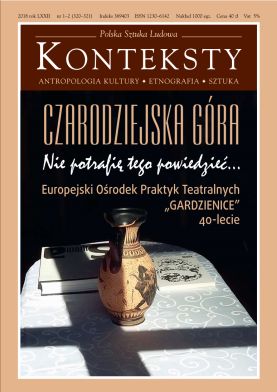
| Magic Mountain | ||
| Zbigniew Benedyktowicz | Introduction: The Magic Mountain I Am Unable to Say This To Render the Mystery Close – Guide to the Issue and Anniversaries | 4 |
| Małgorzata Łukasiewicz | The Magic Mountain | 9 |
| Krzysztof Lipka | The Devil Must be Something of an Expert on Music  | 16 |
The author shares his impressions from rereading (after an interval of many years) The Magic Mountain and Doctor Faustus and attempts comparing the two novels and subjecting them to a criticism of sort. The musical motifs of both works are examined in greater detail, and owing to the brief form of his statement the author tries to characterise problems involving music in a very general fashion so as to emphasize the differences in Mann’s music-oriented reflections, which occurred in the time separating the two works. | ||
| Paweł Próchniak | Nietota – Rheumatism – University of Hell Comments on “Księga tajemna Tatr” by Tadeusz Miciński  | 22 |
The article is an aspect-oriented interpretation of Tadeusz Miciński’s novel Nietota. Księga tajemna Tatr (Nietota: The Secret Book of the Tatra Mountains, 1910), with reflections focused on an analysis of the semiotic potential and construction function of the titular motif and those associated closely with nietota (rheumatism, Angelica archangelica, illness, cure, mystery), considered in the context of their symbolic meanings and inner-textual connections as well as against a wide cultural background, with particular emphasis on the presence of nietota (Huperzia selago, the northern firmoss - a medicinal and, simultaneously, highly poisonous plant) in the imaginarium of folk culture and its magical-medical practices. At the same time the article ponders the self-referential motif of the novel and - in a wider perspective – the inclination of modern literature towards formal experiences of this sort, linked with religious and metaphysical quests. For the author of Nietota such searches were tantamount to an encounter with mystery and, concurrently, became a form of initiation into “astonishing meaning”, which appears in the world of people as “knowledge of darkness and pain”. The article demonstrates that Miciński was convinced that this “’dark knowledge” comes from ”touching a mystery” (and being touched by mystery) while one of its most essential symptoms is the subversive energy and healing power of art. | ||
| Jerzy S. Wasilewski | The Ethnographer Enters Uninvited The Ethnologist on a Journey, Part 11  | 43 |
The titular motto: “The ethnographer enters uninvited” could be the first commandment in a decalogue of the ethnographer-field researcher, encouraging him to boldly enter the domain of examined communities. This postulate, however, carries a (difficult to predict) risk of contacts with dangerous persons and perilous terrains (e.g. high mountains). The author presented situations of this kind, which he experienced in the course of research carried out in Central Asia, described the ways in which he overcame assorted complications, and wrote about the cognitive benefits of such confrontations. | ||
| I Am Unable to Say This | ||
| Zbigniew Benedyktowicz | I Am Unable to Say This | 51 |
| Paweł Próchniak | Silence on the Poem „De passage à Paris”  | 63 |
What does a poem remember? What does it store within? What does it guard? Why does it allow to deviate in our direction? Certain poems contain something poignantly real and, at the same time, undefined, some sort of a real presence devoid of support and suspended somewhere in between, always on the move. This nondescript presence appears in our world as an unclear feeling, a trace of intuition, an affection of memory. It contains the volatile lightness of a musical passage, and itself turns into the latter – a transition, a clearance, and a combination. I believe that De passage à Paris by Stanisław Baliński is a record of such a presence, and my article is an attempt at capturing it in assorted mutually permeating modalities - from literary, existential, and historical to musical. | ||
| Dariusz Czaja | “Does the Abyss Need a Language?” Voices from Beyond the Grave  | 79 |
“Spoon River Anthology”, the masterpiece by Edgar Lee Masters (1915), creates right in front of our eyes a micro-cosmos of a fictional small town in the American Midwest. This is by no means an anthropological panorama or a sociological record but texts that resemble rather incisive photographic portraits, which try to extract the distinctness and exceptional character of the portrayed sitter. In his anthology Masters went underground and brought the dead back to life: 243 epitaphs contain stories about their lives on Earth, each successive text being a piece of a puzzle creating a vision of the world of the provinces. The paradox of “Spoon River Anthology” consists of the fact that while speaking about the netherworld, the land of death, it actually speaks about life and is incapable of saying something exclusively about death. | ||
| Stanisław Krajewski | We Incapable of Saying Anything: Apophatic Anthropology?  | 87 |
Describe something comprehensively with words? As a rule, it suffices to describe to a degree necessary for understanding. God is totally elusive. Infinity is partly so, and the same is even true of natural numbers, premonitions, hopes, and atmosphere. Even if something can be expressed it is still impossible to grasp numerous aspects. This is even the case when we limit ourselves to issues well known to everyone around us and, resumably, experienced by all in the same way or at the very least extremely similarly. My example pertains to one of the most banal forms of our behaviour: saying “good day” to others on a mountain trail. If I am correct, then there unavoidably appears a sui generis ”apophatic anthropology”: we experience man and human issues without differing among each other – if not in reference to all people then at least to an accepted group – but are incapable of describing this. | ||
| Paolo Rumiz | I Am Unable to Say This  | 93 |
Reflections about the inexpressible and ineffable. The author divides the “ineffable” into sections: the unutterable – something that cannot be said, and the indescribable – something that cannot be described, two categories than can be contained in the word: ”inexpressible”, whose boundaries are not identical for all. There exists a universal “inexpressible”, which remains outside the two categories and time, but there also exists an “inexpressible” characteristic only for our epoch. | ||
| Janusz Bohdziewicz | Re: Logos – on the Impossibility of Prayer  | 97 |
The objective of this essay is to inspire reflections on the (non)expressiveness of prayer, which today is sometimes an intersection of the errors of believers and non-believers. An attempt at speaking about prayer situates itself between Heidegger’s: ”Only a God can save us” and: ”The only possibility of salvation left to us is to prepare readiness, through thinking and poetry, for the appearance of the god or for the absence of the god during the decline” and the deconstruction of Christianity conducted by Jean-Luc Nancy, completed with a prediction of adoration as the manner of being and thinking most suitable for our times. The first part of my statement will outline a project of the phenomenological anthropology of prayer, while the second – of its deconstruction, revealing that imploration is a new manner of creative thinking, transcending the intention of cognition towards the creation of the world and meaning. | ||
| Michał Klinger | Hair and Tears. The Silence of the Text - the Silence of the Body on the Sinful Woman  | 102 |
The first and greatest mystery of cognition: “the presence of the inaccessible:...” (reference to Heidegger) is associated with the task of interpretation, conceived as a quest for that, which is inarticulated in that which is articulated. In this context we propose the method of an exegesis of the text, discovering that about which the text remains silent. And a second, similar mystery: the silence of the body and its inaccessibility for logos. The majority of texts emerging ”from the body” are works of art. See: suitable motifs from the Gospel. An example of the importance of the “inarticulated” in the narration of the text is a detailed analysis of a single famous instance: traces of the Sinful Woman in narrations about ”anointment” as well as a sketched crystallisation of Tradition. The author provides testimonial hypotheses of the “inarticulated” identification of the motif and person of the Sinful Woman, the woman from Bethany and Mary Magdalene. | ||
| Ivan Dimitrijević | I Can: on the Political Power of the Vernacular  | 112 |
According to a story cited by Giorgio Agamben in his collection of essays: La potenza del pensiero, one day, while standing in a queue, that typical element of the gloomy spiritual-social landscape of Soviet Russia during the 1930s, a certain woman recognised Anna Akhmatova. She approached the poetess to ask her only a single extreme and peremptory question: ”Can you express this?”. After a moment’s reflection Akhmatova gave an equally definite reply: “I can”. Using the terminology of Ivan Illich one could risk the opinion that the language of poetry – a language in which one can say what is happening by extracting events from oblivion – is the vernacular. This is a language that is not taught but obtained from a cultural environment thanks to conversations with concrete persons. In contrast to uniformised languages imposed by the authorities (which could be described as ”orthology”) the vernacular exists so that people could tell each other things straight to their faces. The power of language lies in the ethical experiencing of reality, and by cultivating it the poet wields power more durable than its orthological and ortho-practical political counterpart. | ||
| Łukasz Sochacki | Lunissanti. The Anthropologist and Experience  | 119 |
The point of departure of this article is an ethnographic observation of Easter Monday celebrations in Castelsardo (Sardinia), where the festivity possesses a unique form. Particular attention is due to the evening procession down the town streets, with four male choirs (quartets) performing religious songs. Reflections presented by the author of this article are based on his participation in the Lunissanti procession, his attitude to attempted objectivising observation, and difficulties with taking into account the experiences of a researcher in the course of writing an ethnographic text. | ||
| Krystian Darmach | The Puzzle of the Vanishing Boundary  | 125 |
In a reference to the leitmotif of the 7th Anthropological Meeting held in Zakopane in December 2017 the author of the presented text embarks upon yet another attempted reflection on the “location” of the boundary between creative (literary, artistic) work and scientific-research activity. In doing so he attempts to evoke arguments justifying his theoretical and methodological ”uncertainty” connected with the absence of the possibility of a clear delineation of a boundary between the above-mentioned domains of creative human activity. Art. Science. Creativity. Anthropology. Each of these words has become swamped with an almost infinite number of publications. Each appears in more or less serious as well as completely ordinary and commonplace registers, stirring the minds of the public, scholars, artists, men of letters, and theoreticians of assorted domains of the humanities. The purpose of using those concepts in such a juxtaposition is to confront and compare them, and to examine them more closely as conceits whose ranges are increasingly fluidly overlapping and crossing in an unexpected and often extremely inspiring way. Is contemporary science/anthropology (or at least some of its symptoms), or can it be, a new form of artistic activity? Is art inspired more than ever in its past by science (e.g. ethnography, anthropology, the humanities)? Does it exploit science already fully consciously and consistently as a tool for quests and expression? Or, on the contrary, does art today find in science its best/better ally? Must science and ”fiction” be mutually exclusive? Finally, when and why should those domains be distinctly differentiated? | ||
| Katarzyna Prot-Klinger | Words after the Holocaust  | 129 |
The article deals with the changed meaning of words – a consequence of the Holocaust. During the war “ordinary” and “innocent” words were used to describe successive stages of murdering people. It is difficult to find suitable words for describing the experiences of the Holocaust but new words connected with Shoah continue to appear. Problems with using words and the emergence of new terms reflect those connected with the transmission of mourning between generations. The author proposes a hypothesis claiming that members of the “third generation” – the grandchildren of the victims, perpetrators and witnesses – are ready to go through mourning, which could restore the correct meanings of words. This does not signify putting an end to the period of mourning. In the case of the Holocaust there exists a constant need for mourning, described by Derrida as demi-deuil, i.e. remaining in a position “between” – an oscillation between incorporation and introjection. Such a oscillation can also pertain to words, which can alter their meaning – they can be a thing or a symbol. | ||
| Tomasz Szerszeń | You Saw Nothing in Hiroshima  | 135 |
“You saw nothing in Hiroshima. Nothing. / I saw everything. Everything” – this dialogue between the main protagonists of Alain Resnais’ film: Hiroshima Mon Amour and the book by Marguerite Duras perfectly discloses the paradox we tackle while attempting to present the unforeseeable. With the Resnais film as a point of departure the author deliberates about relations between inability and the compulsion to depict, the ways in which the cinema and photography face the tragedy of Hiroshima, as well as, predominantly, that, which images of destruction and, more generally speaking, ephemeral traces from the archive of destruction, “say” to us today, from an emotional and time distance. Does this mean that there is nothing to imagine because there is nothing – or almost nothing – to see? Certainly not – wrote Georges Didi-Huberman in Bark, an essay endeavouring to reflect on the ability (inability) to behold in Auschwitz. Are we capable today of taking yet another look at the titular piece of bark and the dust left behind by History? | ||
| Monika Sznajderman | The Last Day  | 143 |
I am incapable of telling all this and explaining anything. I am even unable to come close to the experiences of the children from the Medema sanatorium and their carers, regardless which one of the women accompanied them on the last way. Joseph Conrad once wrote: “I have given up expecting those last words, whose ring, if they could only be pronounced, would shake both heaven and earth”. In an excellent essay about the Ringelblum Archive Krzysztof Środa declared: “A few hours of reading suffice to understand that this man of, it seemed, excellent taste – I am not sure I can handle the topic – is compromising. After all, what would have happened if Emanuel Ringelblum started to wonder whether he could manage to rise to the topic? If all those people who helped him started to think about this? If Rachela Auerbach contemplated this? It is obvious what would have happened. They would have acknowledged that they could not manage. And no Archive would have come into being”. I take the risk, therefore, of ceasing to look for Conrad’s “last” words and Adina Blady-Szwajger’s words that shout, and attempt to build sentences simple and free from the “pathos of adjectives and the pomposity of epithets”, as Bruno Schulz wrote. It would be best of all if adjectives and epithets simply did not exist. It is also extremely important to completely avoid adverbs. And not to say: “They went passively”, “they went of their own free will” or “like sheep to the slaughter”. When the world was coming to an end there were no other words than the ones we know so well. Only they can help us to evoke those who passed through life so rapidly and quietly that history almost failed to notice them: those children from the Medema sanatorium and their carers – dark haired Tola, fair haired Hendusia, and Rozalia, who in her youth was known as Rejzele. | ||
| Zbigniew Benedyktowicz | What I Showed to the Dead. On the Margin of Postcard from a Journey | 153 |
| Paulina Orłowska | Risk as a Condition for Making a Statement. On the Fabrizio Gatti Reportage: “Bilal. To Travel, Work and Die as Illegal Immigrants”  | 159 |
While referring to the accomplishments of Fabrizio Gatti, the Italian assumed identity journalist, the author of this article draws attention to dependence between the act of making a statement, courage and communality. It is justified to declare that often “one finds it impossible to say something” because one does not take a risk and, more, at all cost tries to say “that” by oneself? The far from perfect courage of dialogicality, to which Gatti resorts, produces reportages in which the Other, instead of being a prototype example of dissimilarity, is our neighbour. By means of the corporeality of his activity the reporter delineates the boundaries of the community and invites to verify our cultural base. | ||
| Magdalena Barbaruk | The Forbidden Function of Language: the Amereida Case  | 165 |
The leitmotif of this analysis of Amereida, a phenomenon recognised to be one of the most interesting in contemporary Latin American culture and identified predominantly with the avant-garde architecture of the “Valparaiso School” and the Open City, created in 1971, in which the foundation of multicultural objects is composed of poetic acts (phalànes), is a question about the part played in their emergence by a literary journey, the so-called Travesía. This journey conducted in 1965 by a group composed of ten persons was described as ”mythical”, “foundation-like” and “a new act of founding America”. The author enquires about the effectiveness of literary journeys within the domain of culture, the dependence of decolonisation upon the European heritage, and the ambivalence of utopian undertakings in the Open City at the time of the Pinochet dictatorship, as well as the limitation of media mediating in the journey (poem, diary, photograph). The framework of the reflections is composed of deliberations concerning a new deciphering of the poetics of Mallarmé, in which the restricted impact of language – comprehended as L’action restreinte – does not exclude the political qualities of poetry. Despite such an interpretation and the fact that for Amereida the oeuvre of the French poet comprised a source of essential inspiration, a juxtaposition of both utopias makes it possible to extract the principal difference in the limitations of poetic activity. | ||
| Leszek Koczanowicz | Fear of Politics  | 178 |
Politics is one of the most popular forms of human activity, but when we ask about its nature we are unable to give an unambiguous answer. The article presents assorted conception of politics, spanning from the most dramatic ones, which associate it with violence, to liberal ones that perceive in politics predominantly dialogue and consensus. There is only one conclusion to be drawn from this survey: we are unable to define what politics consists of and are doomed to doubts and understatement. On the other hand, we cannot stop talking about politics in view of the fact that it is an inalienable element of human existence. | ||
| Piotr Jakub Fereński | That, Which Cannot be Told Has to be Shown or, On the Images of Silence  | 186 |
“It would be interesting if someone examined the degree to which global systems of mass-scale coverage serve information and to what degree – silence. Is that, which is said or that, which is passed over in silence, more numerous?” – Ryszard Kapuściński wrote in one of his intervention reportages. In a reference to this question the author of the article embarks upon reflections on what words and images conceal and, first and foremost, what they might reveal. Are texts sufficiently momentous to break silence and are photographs adequately powerful to be capable of overcoming silence? Can the “reflection of light” become an instrument in the battle waged against the aphonia produced by the apparatuses of repression? Is an image remaining in direct contact with the presented capable of disclosing the “concealed” and “unsaid”? Can a photograph be a representation of the “unutterable” and show the “unimaginable”? Is the depicted capable of revealing the “concealed” and “unutterable”? Can the photograph be a representation of the “unutterable” and show the “unimaginable”? | ||
| Krzysztof A. Meissner | Are There Beings about Which Physics is Unable to Say Anything?  | 199 |
Not so long ago the titular question would have been an open provocation in the eyes of almost all physicists and I believe that today too many would treat it identically. For them the obvious answer would be: “no”: whatever exists in reality, in a material way, is – or will be in the future – described to the very end by physics. Everything that does not belong to this category either exists in a deformed and fleeting fashion, or is not a being but only a relation between beings. At this point it is worth mentioning an immanent limitation: physics does not deal with beings that are internally contradictory (take the example of the motion of small bodies in the general theory of relativity). Ostensibly, I can express an opinion about their existence, but actually I cannot think in this way if I know about their inner contradiction, which Ludwig Wittgenstein stressed in his treatise on logic. A significant remark concerns the language in which we speak about beings. It could appear that this is not a problem in physics, since the language of physics is mathematics, the identical for all. Nonetheless, things are not that simple. For instance, the same equations, for instance Albert Einstein’s equations in the general theory of relativity, are experienced completely differently by someone who sees them for the very first time or after a year’s work with them, and still differently by someone who has dealt with them for over 30 years, as in my case. The meaning of the message also depends on the recipient – it is possible to be unable to say it but it is just as possible to be unable to receive it. My text will deal with two questions: beings, which physics deals with but whose ontological status is unclear (in other words, I am capable of speaking about it but am not quite sure whether it exists), and beings that exist but about which I am unable to speak within the range of physics. | ||
| Dorota Koczanowicz | The Pineapple, or on the Inability to Speak about Taste  | 202 |
Can the pleasures of the internal organs be exteriorised by the tongue? The tongue, “that strange muscle”, participates in the articulation of speech and the emergence of taste impressions. While engaged in those two tasks it unwillingly undertakes mediation between expressing and tasting. It is difficult describe taste, but connections between speaking and eating are inextricable. The majority treats conversation as an inherent part of a meal, while the very process of preparing and sharing food is a form of a statement – a communiqué of the emotion of belonging or exclusion. | ||
| Zuzanna Grębecka, Marcin Krassowski | To Conduct Research Together, to Write Separately  | 211 |
The article concerns the mutualization of the textual creation of the outcome of ethnographic research conducted by a team. The authors discuss the experience of joint activity in the course of two field projects – the first about the Soviet army stationed in Legnica, and the second, conducted by Michał Sabadach, about anniversary meetings organised by the General Ludwik Polański Private Museum of the Polish People’s Army and Soviet Army Mementoes situated in Uniejowice near Złotoryja (ca. 30 kms from Legnica). The outcome of the first project, realised as part of a National Science Centre grant: Legnica – memory of a divided town, was the creation of an Ethnographic Cooperative. One of the manifestations of the communality of the studies is the field diary, discussed in the article, a record of field experiences and, simultaneously, a game of sorts conducted by the researchers. From the very onset the exploration of the anniversary events held in Uniejowice was such a communal experience. The authors of the article indicate the manner in which it affected the process of generating knowledge and interpretation conceptions. Consequently, the Cooperative researchers decided to write a monograph with a vague authorship, while using methods of creating online texts. The dynamics of this process and the obstacles encountered by the team are the topic of the last part of the article. | ||
| Jan Szpilka | Telling about Desired Pain. What We Are Incapable of Saying about Sadomasochism  | 216 |
An attempt at answering a question about the essence of the problem of expressing and using the category of “desired pain”. By basing himself on research conducted among people practising sexual sadomasochism, and referring to their experiences, the author tries to prove that the response to difficulties with describing pain as something desirable is to be found in attempts at talking about it as if it was not pain at all or describing it as an experience that transcends language to such a degree that it cannot be expressed by the latter. | ||
| Kuba Szpilka | Show Off. Despite All  | 221 |
An attempt at describing that, which one is unable to say, does not bode well. It is a universally known fact that we are capable of being incapable, and this renders such a quality totally uninteresting and outright embarrassingly banal. It is quite another thing to be a sport star or a top model, Jarosław Kaczyński or Andrzej Stasiuk, who bring the improbable to life while their discernible power calls for, and justifies, showing off - a presence in public space that is impossible to ignore and has to be pondered. Here the right to such a presence that is something more than mere physical existence, but is connected with causality, the possibility of exerting an impact, and an effective, visible creation, as if to be and to be able to are the same thing. Common sense, on the one hand, and analytical philosophy armoured with science, mathematics, and logic, on the other hand, an astonishing alliance of forces discouraging the exposition of an event recorded with the words: “I am unable to say this”. What happens that we see the inaccuracy of words? We come across that “something” and do not look away or keep silent but respond, which is the most primary way of expressing consent to presence. Nonetheless, such a way of making oneself heard constitutes, above all, non-speaking, although this is not tantamount to silence but to the incoherence, helplessness, and uncertainty of a response addressed to another being waiting for its form, shape, and name. That “something”, different, alien, and outside our culture suddenly appears within the latter’s domain, starts to make demands, and calls for attention. | ||
| *** | ||
| Agnieszka Bednarek-Bohdziewicz | The Apophatic Mystagogy of Zdania i uwagi – towards the Poetic Falling Silent of Adam Mickiewicz  | 226 |
The article focuses on Zdania i uwagi – a work that could be recognised as the penultimate stop on the way towards the poetic falling silent of Adam Mickiewicz. In it the Romantic author renounced all claims to autonomous creativity and concealed his auteur “I” behind the spiritual guidebooks read by him. The collection reflects Mickiewicz’s evolving views about poetry and the word. In his concept of literature emerging in the shadow of the Romantic crisis of the language the author stressed the mystagogic and performative role of the word. The objective of writing is to render truths permanent and to transmit them (initiation); the written work is to be the reason why something that shall incline others to act will take place. Doubt in the cognitive power of language, combined with an inner conviction about the necessity of proclaiming the truth, leads the poet along the apophatic path, which in Zdania i uwagi reveals itself upon the level of the form in the aesthetics of a fragment (the “kenosis” of the discourse, a bereft style), while upon the level of contents it is expressed in the praise of silence and calm – conditions for contemplation conceived not merely as a way of cognition but also prayer. | ||
| Danuta Danek | The Inexpressible yet Expressed Living Truths of Romanticism. The Mystery of Romantic Love  | 233 |
This analysis focuses on Romantic love conceived as a particular experience of the young protagonist in literature from the era of Romanticism. The author opposes the interpretation of Romantic love – widely disseminated in studies on the history of literature – as a mere literary convention, stylisation or pose of the Romantic protagonist, i.e. a literary concept devoid of cognitive values. In doing so she demonstrates that while combining the workshop of the researcher dealing with literature and the psychoanalytical workshop it is possible to perceive Romantic love as an expression of certain essential and even precursory psychological discoveries. The author’s analyses discover in experiencing Romantic love distinct reminiscences of the protagonist’s emotional past going back to early childhood and connected with the mother figure; this is a past that in the case of each person is retained in unconscious memory and impacts a whole life despite the fact that it usually vanishes from conscious memory. | ||
| Lidia Kośka | Kraus, Lec, Bernhard – Meeting at the Foot of the Tower of Babel  | 240 |
The point of departure for the presented reflections is the declaration made by Walter Benjamin: “The satirist is the figure in whom the cannibal was received into civilisation”. This thesis is subjected to a discussion and emphasized in the persons of three great satirists from the Viennese circle – Karl Kraus, Thomas Bernhard, and Stanisław Jerzy Lec, whose linearly bonded biographies are integrated into the twentieth century, which they elucidate. The author recounts their meetings in real and symbolic space, and presents the life and literary strategies chosen by them depending not only upon their temperament but also the situation in Europe to which their works reacted. The fundamental question concerns the function fulfilled in literature by such statements as the one formulated by Benjamin – and those by the protagonists of the text – whose basic feature is brilliance and exaggeration. The article considers two linguist strategies: satire and metaphor (as well as elitism and ambiguity) versus gravity and literality (together with trivialisation and functionality). That, which in the satirical attitude appears to be “cannibalistic”, untamed, and exaggerated is actually anti-totalitarian, culture-creative, and redeeming. | ||
| *** | ||
| Kasper Bajon | The Metamorphoses of Boscoli  | 251 |
Andrea Boscoli (1564–1606), born in Florence, was the student of Santi di Tito and Buontalenti. Unappreciated in his home town he began seeking good fortune (and commissions) outside its walls, working for the Church and prosperous patrons in Tuscany, Marche, and Liguria. The characteristic features of his frescoes, painted in early spring or autumn, were watered-down dark colours and the great expression of depicted figures. Probably in 1591 Boscoli accepted a commission for decorating a villa belonging to Pietro dela Seta in Corliano, near Pisa, which he embellished with grotesques, portraits of founders, and vedute. In the ballroom, however, Boscoli executed his opus magnum – a Mannerist fresco: ‘Il Convivio degli dei’. Inspired by Plato’s ‘Symposium’ and Ovid’s ‘Metamorphoses’ the fresco is a multi-level treatise on astrology and a study about melancholy; primarily, it is the author’s self-portrait, an unequalled depiction of the status of the artist in an epoch of great revolutions (in science, religion, and art), a perfect rendition of the fears, hopes, and anxieties of the end of the sixteenth century. ‘The Metamorphoses of Boscoli’ is an attempt at capturing the phenomenon of this monumental artwork. | ||
| 40 Years of „Gardzienice” | ||
| Tomasz Wiśniewski | Masters of Performative Liveness, or Celebrating the 40th Anniversary of the Centre of Theatre Practices “Gardzienice”  | 268 |
Held between 28th September and 1st October 2017, the International Festival of Wandering Theatres celebrated the 40th anniversary of the European Centre for Theatre Practices “Gardzienice”. Situated in the remote countryside some 30 kilometres from the city of Lublin, the eponymous village has developed into a European centre of theatre. The festival gathered musicians, theatre practitioners, theoreticians and enthusiasts of many nationalities and all generations and revolved around the theme of the wedding. The première of “Gardzienice’s” latest performance The Wedding – Wyspiański – Malczewski – Konieczny, along with the concert Wyspiański by Konieczny (The Wedding and other dramas) were scheduled as the central events of the festival. yet, some of the less formal gatherings turned into equally prominent events, as they explored performative potential of the ensemble led by Włodzimierz Staniewski. On one such occasion, the founder of “Gardzienice” orchestrated what developed into unforgettable improvisation of choral singing, unorthodox scales, shamanic dance, playing violins, drums and other instruments. | ||
| Tomasz Wiśniewski | Masters of Performative Liveness, or Celebrating the 40th Anniversary of the Centre of Theatre Practices “Gardzienice”  | 263 |
Held between 28th September and 1st October 2017, the International Festival of Wandering Theatres celebrated the 40th anniversary of the European Centre for Theatre Practices “Gardzienice”. Situated in the remote countryside some 30 kilometres from the city of Lublin, the eponymous village has developed into a European centre of theatre. The festival gathered musicians, theatre practitioners, theoreticians and enthusiasts of many nationalities and all generations and revolved around the theme of the wedding. The première of “Gardzienice’s” latest performance The Wedding – Wyspiański – Malczewski – Konieczny, along with the concert Wyspiański by Konieczny (The Wedding and other dramas) were scheduled as the central events of the festival. yet, some of the less formal gatherings turned into equally prominent events, as they explored performative potential of the ensemble led by Włodzimierz Staniewski. On one such occasion, the founder of “Gardzienice” orchestrated what developed into unforgettable improvisation of choral singing, unorthodox scales, shamanic dance, playing violins, drums and other instruments. | ||
| Włodzimierz Staniewski | Speech Given at the Opening of the Festival of the Fortieth Anniversary of “Gardzienice” | 227 |
| Alison Hodge | Three Stories | 279 |
| Farin Zahedi | Music of Life | 280 |
| Ian Watson | Magic of the Theatre | 281 |
| Marete Klingen | My Roots | 283 |
| Zbigniew Benedyktowicz | Two Theatres | 284 |
| Michael Earley | Gardzienice from the Perspective of International Imagination | 288 |
| Krzysztof Miklaszewski | Gardzienice | 289 |
| Per Borg | Thanks for the Tears and Experiencing Love | 291 |
| Jerzy Axer | Pneuma trismegiston | 292 |
| Ian Watson | Gardzienice, the Greeks and Artes Liberales | 293 |
| Michał Klinger | Speech Given at the Fortieth Anniversary of “Gardzienice” | 298 |
| Richard Gough | The Butterfly Effect | 300 |
| Philipe Arnoult | “Staniewski: Observe” – Statement Made during a Presentation of the Order of Merit for Polish Culture Badge | 303 |
| Philip Arnoult | Chronicle of Dark Times | 304 |
| Włodzimierz Staniewski | „Wesele” – Director’s Note | 305 |
| Tomasz Wiśniewski, Katarzyna Kręglewska | Towards an Alliance between the Performers and the Audience – Wesele by The Centre for Theatre Practices “Gardzienice”  | 309 |
Similarly to the earlier work of “Gardzienice”, The Wedding – Wyspiański – Malczewski – Konieczny constitutes a condensed and artistically autonomous universe. On the one hand the production makes extensive use of creative methods that are typical of Włodzimierz Staniewski and on the other employs specific stage language that has been developed by the ensemble. Complex artistic organization of the on-stage reality may be observed not only in the case of a particular performance but also in the broader sequence of events that are named “a theatre marathon”. For this reason, the article focuses not only on a particular staging of Wesele…, but concentrates also on the performative potential of the “marathon” held between 19th and 20th January 2018. Wesele… by Gardzienice is additionally placed in a broader interpretative context. | ||
| Krzysztof Miklaszewski | „Wesele” Directed by Staniewski, or a New Anniversary Assembly | 319 |
| Tomasz Wiśniewski, Dominik Gac | Three Conversations with Włodzimierz Staniewski. Day 1  | 325 |
Staniewski’s production of Wesele – a major Polish modernist play by Stanisław Wyspiański – is the starting point for the interview. The conversation, then, deals with the themes of madness and derangement. The motif of the wedding is observed in some earlier works of “Gardzienice” and the difficulty of finding a language adequate for describing the work of the company is mentioned. Wiśniewski points out certain duality that underlies the character of Staniewski himself. Next, the interview focuses on the extent the present form of the European Centre for Theatre Practices “Gardzienice” is a realisation of the potential rooted in a more provocative dimension of Staniewski’s approach. It seems that the gesture of dissent against the surrounding reality of the time is still crucial for the founding myth of the company. The acquisition of knowledge is an imminent part of the actions undertaken by “Gardzienice” and for this reason the relations between the research and the productions is discussed. The conversation attempts to define a distinction between the origins of the ensemble and its present condition and analyses the discussion of Gardzienice’s approach to the creative process and the evolution of the performance itself. Finally, Staniewski wonders whether Wyspiański’s ‘Wesele’ may be treated as a profound play and thus be inscribed in a universal context. | ||
| Dominik Gac, Tomasz Wiśniewski | Three Conversations with Włodzimierz Staniewski. Day 2  | 330 |
Staniewski’s production of Wesele – a major Polish modernist play by Stanisław Wyspiański – is the starting point for the interview. The conversation, then, deals with the themes of madness and derangement. The motif of the wedding is observed in some earlier works of “Gardzienice” and the difficulty of finding a language adequate for describing the work of the company is mentioned. Wiśniewski points out certain duality that underlies the character of Staniewski himself. Next, the interview focuses on the extent the present form of the European Centre for Theatre Practices “Gardzienice” is a realisation of the potential rooted in a more provocative dimension of Staniewski’s approach. It seems that the gesture of dissent against the surrounding reality of the time is still crucial for the founding myth of the company. The acquisition of knowledge is an imminent part of the actions undertaken by “Gardzienice” and for this reason the relations between the research and the productions is discussed. The conversation attempts to define a distinction between the origins of the ensemble and its present condition and analyses the discussion of Gardzienice’s approach to the creative process and the evolution of the performance itself. Finally, Staniewski wonders whether Wyspiański’s ‘Wesele’ may be treated as a profound play and thus be inscribed in a universal context. | ||
| Tomasz Gac, Tomasz Wiśniewski | Three Conversations with Włodzimierz Staniewski. Day 3  | 340 |
Staniewski’s production of Wesele – a major Polish modernist play by Stanisław Wyspiański – is the starting point for the interview. The conversation, then, deals with the themes of madness and derangement. The motif of the wedding is observed in some earlier works of “Gardzienice” and the difficulty of finding a language adequate for describing the work of the company is mentioned. Wiśniewski points out certain duality that underlies the character of Staniewski himself. Next, the interview focuses on the extent the present form of the European Centre for Theatre Practices “Gardzienice” is a realisation of the potential rooted in a more provocative dimension of Staniewski’s approach. It seems that the gesture of dissent against the surrounding reality of the time is still crucial for the founding myth of the company. The acquisition of knowledge is an imminent part of the actions undertaken by “Gardzienice” and for this reason the relations between the research and the productions is discussed. The conversation attempts to define a distinction between the origins of the ensemble and its present condition and analyses the discussion of Gardzienice’s approach to the creative process and the evolution of the performance itself. Finally, Staniewski wonders whether Wyspiański’s ‘Wesele’ may be treated as a profound play and thus be inscribed in a universal context. | ||
| Dominik Gac | The Magician of Gardzienice  | 343 |
An essay attempting to characterise that sphere of the works of Włodzimierz Staniewski, which transcends the theatre. By reaching for earlier studies and statements made by artists connected with the “Gardzienice” Centre for Theatre Practices the author asks about relations between art and the place in which it is created and presented. In doing so, he proposes the thesis that such a relation is one of the key questions in the reception of “Gardzienice” and that the seat of the Centre for Theatre Practices comprises a fully-fledged work of art. He also takes a close look at contacts between the theatre and the village of Gardzienice and the interference of the artists in the latter’s imaginarium. In the course of his reflections Dominik Gac makes use of, i.a. the category of geo-poetics. | ||
| Dominik Gac | Generating Hope | 355 |
| Wiktor Uhlig | To Stage Academic Bumptiousness! On Theatre Ecology Workspace / “Stage Essay” | 367 |
| * | Golden Ass. On Women and Desire | 373 |
| Wiktor Uhlig | Schulz in the Wagnerian Mode  | 383 |
The article concerns Noc poślubna (Wedding Night), a musical drama written, composed, and directed by Jan Lech and based on a novel by Bruno Schulz from the Sklepy cynamonowe collection. The spectacle was prepared for the 40th anniversary of the Centre for Theatre Practices “Gardzienice”. The first part of the text presents Jan Lech’s path towards “Gardzienice” – from participation in the “Ecology of the theatre” course at Warsaw University and scientific activity to artistic undertakings. A fundamental part of the article is an analysis of ‘Noc poślubna’ and a description of the work methods applied by its author. The opera by Jan Lech features both discernible inspiration by the oeuvre of Richard Wagner, twentieth-century music, and echoes of experiences gained in Gardzienice. In his auteur adaptation of Schulz’s prose Lech disclosed a personal style consisting of playing a game with the conventions of assorted epochs and processing scientific research into the language of art. In his small-scale theatrical-musical work Lech proposes an interesting interpretation of the oneiric ambiance and Expressionistic character of Schulz’s Karakony. | ||
| Bogna Paprocka-Podlasiak | Rhythms of Love, Steps of Death. Letters to Milena, Franz Kafka, Directed by Maciej Gorczyński  | 387 |
The article studies the theatrical version of Franz Kafka’s Letters to Milena, directed by Maciej Gorczyński as part of the third edition of the “The Gardzienice Generator of Hope” programme. The point of departure for the analyses and interpretations of the spectacle are questions associated with the process of an adaptation for the stage of such specific material as the correspondence between the titular writer and Milena Jesenska. A detailed approach includes also the spectrum of the themes and problems of a production focused on such issues as: love-illness-death, which constitute a sui generis “existential triad”, on which Gorczyński’s heretofore creative quests concentrate, as shown not only by Listy do Mileny but also his earlier productions (i.a. Lato 1910 [Summer 1910], Hymny do Nocy [Hymns to the Night]). Moreover, a prominent element of the studies is the poetics of the spectacle, with particular attention paid to music, the visual arts setting, and dance conceived as the main medium of artistic expression in the stage version of Letters to Milena. | ||
| Grzegorz Kondrasiuk, Dominik Gac | Niecała. Rena Targońska  | 396 |
This text, dedicated to Teresa Targońska, stage and costume designer, is composed of two parts: a biographical note encompassing the most significant events from her path as an artist and a brief essay endeavouring to characterise Rena upon the basis of statements made by her co-workers and friends (i.a. Elżbieta Rzewuska, Władysława Zossel-Wojtysiak, Włodzimierz Staniewski, and Jan Bernad) as well as the author’s reminiscences. One of the prime motifs are Rena’s close and years-long relations with the “Gardzienice” Centre for Theatre Practices, but also intense work in theatres all over Poland, both dramatic and puppet, as well as in formations outside the sphere of the repertory theatre. | ||
| Włodzimierz Staniewski | Desiderata at the End of a Third Decade, Gardzienice | 402 |
| A Hundred Years of ZAiKS | ||
| Edward Pałłasz | We Got Over the First Hundred Years | 407 |
| Janusz Fogler | We Made It! We Just Turned a Hundred | 408 |
| Rafał Marszałek | We Create and Protect. A Hundred Years of ZAiKS | 410 |
| Janusz Fogler | 100 Years | 424 |



